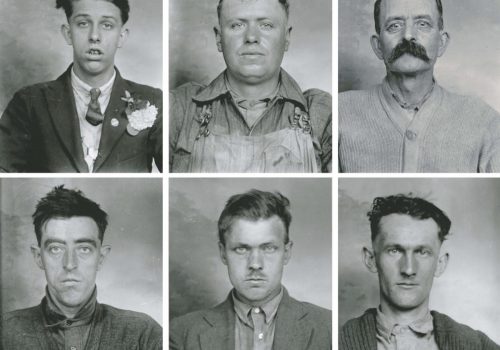The Shadow Archive: An Investigation Into Vernacular Portrait Photography is an exhibition at The Walther Collection in New York that examines the uses of photography to document, record, and identify individuals from the 1850s to the present. The Shadow Archive inaugurates the collection multi-year series of exhibitions focused on the history of vernacular photography—utilitarian imagery made primarily for commercial or personal purposes, rather than aesthetic ones.
Entitled Imagining Everyday Life: Aspects of Vernacular Photography, the series of shows considers the social and historical significance of non-fine-art photography in a wide range of applications. It will include five exhibitions in New York and an international scholarly symposium in Fall 2018, culminating in May 2019 with a comprehensive exhibition organized by curator Brian Wallis (former chief curator of the International Center of Photography) at The Walther Collection in Neu-Ulm, Germany, and accompanied by a catalogue co-published with Steidl.
The inaugural exhibition, The Shadow Archive, shows that nineteenth-century daguerreotypes of families to recent images of migrant farm workers, identification photographs have been used to sort, shape, segregate, and select subjects based on occupation, social group, body type, or political affiliation. Covering a wide range of historical and contemporary objects, this fantastic exhibition includes a frame of sixteen tintypes from the 1860s of family members united to form a visual genealogy; a group of mug shots drawn from an archive of thousands of similar images from California prisons in the 1890s; a sequence of views of a French medical patient demonstrating human emotions while under hypnosis; a collection of eighty near-identical ID badges from a World War II-era manufacturing plant; a roll of dozens of 1980s yearbook portraits from a Midwestern high school; and a series of recent color passport-style portraits from a Ugandan studio, all with the faces cut out. This exhibition asks several questions: can such utilitarian images be considered portraits? What do they reveal of the sitters and their social roles? And what do they tell us about the significance of photography and representation today?
Taken for a wide variety of purposes, these photographs place little value in originality, variety, or aesthetic niceties of photographic style. Rather, they deliberately replicate, and in fact rely on, the conventions of the studio portrait genre. When applied to bureaucratic archives, such photographs establish an inventory of nearly identical pictures that can be compared to one another for identification within a state or corporate organization—as with mug shots in the penal system or passport photos for immigration. The social and even political needs of the sitters—barely discernible signs of resistance, made evident through slight changes of pose or gesture—come to mean more in such contexts than the motives of the photographers.
Also, these pictures defy the bourgeois definition of the portrait as an honorific presentation or a window into the soul. Instead, they are more like fragments from what theorist and photographer Allan Sekula called “the shadow archive.” By this, Sekula meant the entire social field of human representations, comprising both heroes and deviants, within which every portrait takes its place as part of a moral hierarchy. The various, mostly unidentified individuals represented in these portraits, often in relation to their labor and employment, take up positions that are ratified or confirmed by their documentation in photography. Such serialized images lack meaning individually, and assume relevance only in relation to one another, and to the shadow archive.
The Shadow Archive
December 8, 2017 – March 31, 2018
The Walther Collection Project Space
526 West 26th Street, Suite 718
New York, NY 10001
USA
















